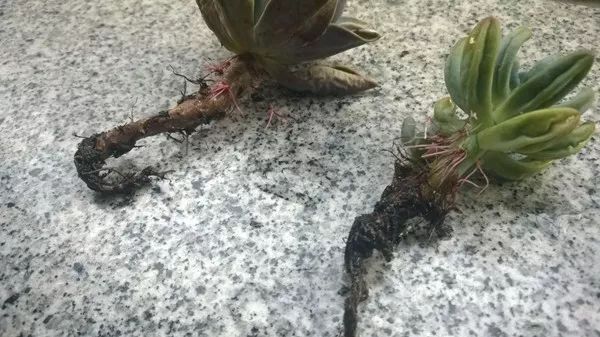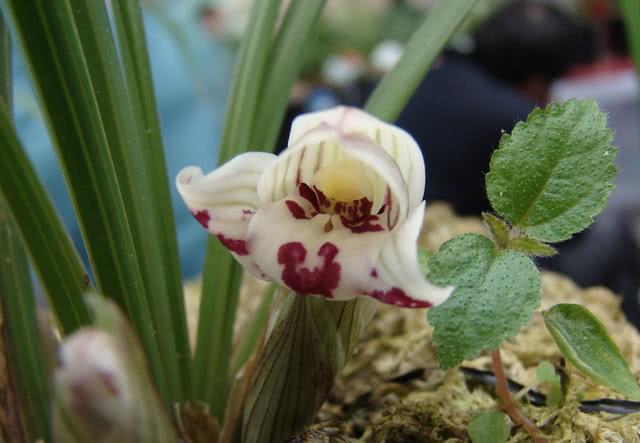Four methods teach you to judge the rotten roots of flowers is simple and practical.

In the process of flower cultivation, rotten roots of flowers can be said to be a headache for many flower friends. It is troublesome to deal with them, and the subsequent slow basin and treatment also consume energy. A little carelessness will cause the death of flowers, which is really a pity.
The causes and treatment of flower root rot are temporarily ignored. If it can be discovered in time at the early stage of plant root rot and treated and remedied in a short time, it is very beneficial to the successful recovery of plants.
So how to judge whether the flower is already in a rotten root state? Remember the following four points.
1
observation basin soil
To determine whether a plant has rotten roots, choose to water it once during its growing season, preferably thoroughly. After two days, observe the state of the pot soil on the surface of the plant again.
Because the normal plant root system is sound in its function of absorbing water, if the soil surface is dry and white, it indicates that the plant root system is working normally and the plant has not rotted.
However, if the soil surface of the plant is still wet after two days, it means that the root system of the plant is not functioning normally, and the root system of the plant may have rotted or be a sign of rot.
2
contrasting leaf color
Two potted flowers of the same type can be put together for comparison, observe the state of their leaves, and distinguish and compare the leaf growth and leaf color of the two.
If the leaves of the plant are withered, the leaf color is dull, and even the surface of the leaves is obviously gray, or the lower part of the leaves of the plant falls too much, it indicates that the root system of the plant may have rotted, and the normal work of the root system stops.
3
Focus on leaf tips
You can tell if a plant has rotten roots by looking closely at the tips of its leaves and by the color or condition of the tips.
If the plant leaf tip yellow, white, leaf tip was dry coke state, leaf tip part of the brown spots, etc., it means that the plant has the possibility of rotten roots.
Because the root system cannot breathe normally after the root rot, the nutrients cannot successfully reach the leaf tip, which leads to the yellowing and scorching of the leaf tip.
4
Just feel it.
The presence of rotting roots can be determined by gently touching the leaves of the plant, which is especially effective for foliage plants.
Generally, the leaves of healthy plants feel good to the touch. If you touch the leaves, you will feel a cool, warm and comfortable feeling.
However, if the roots of plants rot, the surface of their leaves will lose their original cool feeling due to lack of nutrients, and they will be dry and dry to the touch.
If you find that plants appear in the above conditions, you must take remedial measures in time. Remove the plant from the pot and observe the severity of root rot. If the situation is lighter, you can put broken tiles, vermiculite and other items in the basin, and then place the flowerpot in a well-ventilated place for maintenance for a period of time.
If the rotten roots of the plant are more serious, it is necessary to immediately cut off the blackened roots from the scissors and apply hundreds of mushrooms to the wound. Then pour out the pot soil and replace it with new breathable soil. Put the pot in a cool place and let it stand for one to two weeks until it recovers.
If you like flowers too, follow us!
- Prev

Accidentally bought fake orchids for 1000 yuan and taught you how to look at leaves and identify valuable orchids.
Today's orchid market is hot, all kinds of valuable flowers emerge in endlessly, there are many bright colors, exuberant seedlings, the price is still very cheap, it is necessary to pay more attention to the possibility of fake grass, recently, some orchids inadvertently bought fake orchids, 1.
- Next

Divorced more than ten years ago, my husband invited me to my daughter's wedding. I froze when I saw my son-in-law-to-be.
After more than ten years of divorce, my ex-husband invited me to my daughter's wedding. When I saw my son-in-law-to-be, my ex-husband, who had been divorced for 15 years, called and told me that my daughter was going to get married, but he wanted me to stop it. When I got the call, I was very confused.
Related
- Wuhan Hospital Iron Tree Blooming Result Was Instantly Frightened by the Gardener Master
- Which variety of camellia is the most fragrant and best? Which one do you like best?
- What is the small blue coat, the breeding methods and matters needing attention of the succulent plant
- Dormancy time and maintenance management of succulent plants during dormancy
- Minas succulent how to raise, Minas succulent plant pictures
- What are the varieties of winter succulent plants
- How to raise succulent plants in twelve rolls? let's take a look at some experience of breeding twelve rolls.
- Attention should be paid to water control for succulent plants during dormant period (winter and summer)
- Watering experience of twelve rolls of succulent plants
- Techniques for fertilizing succulent plants. An article will let you know how to fertilize succulent plants.

